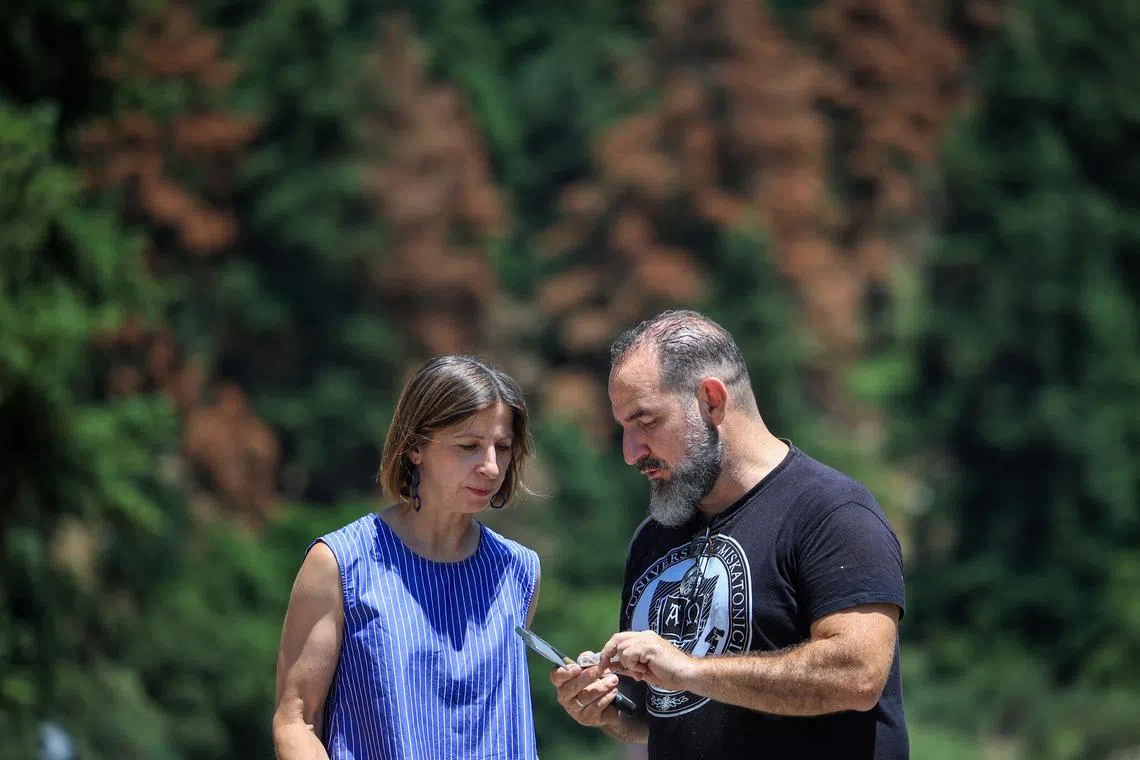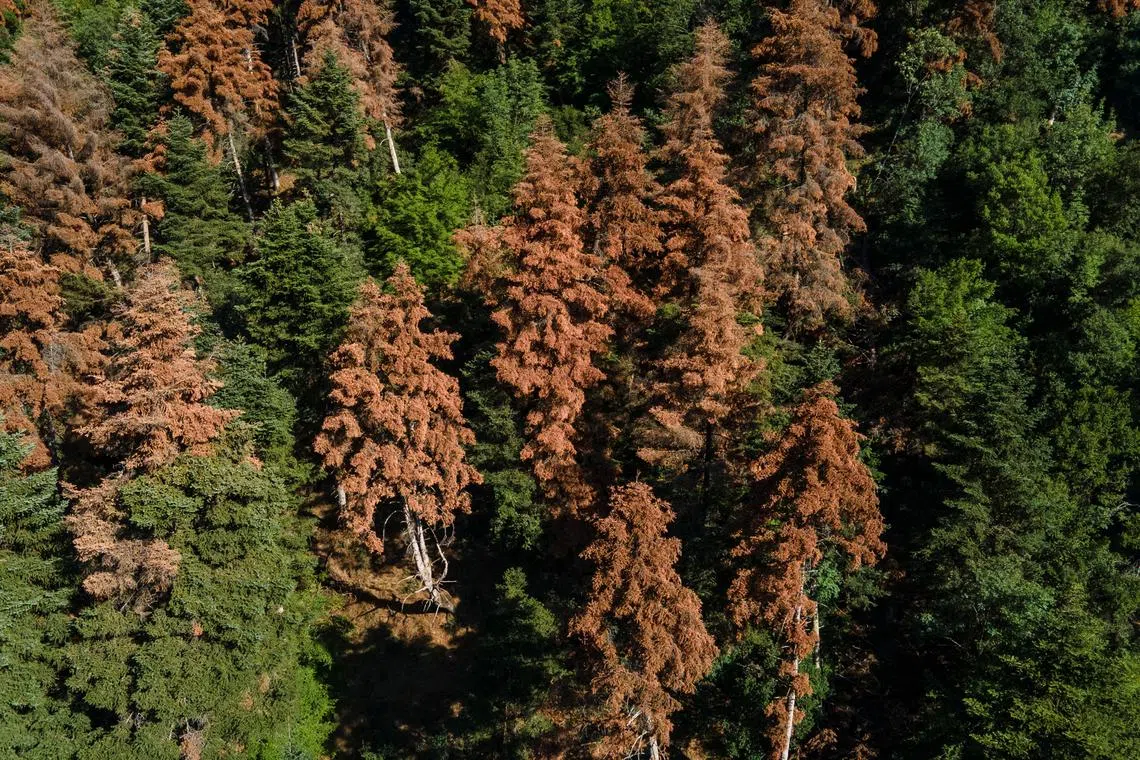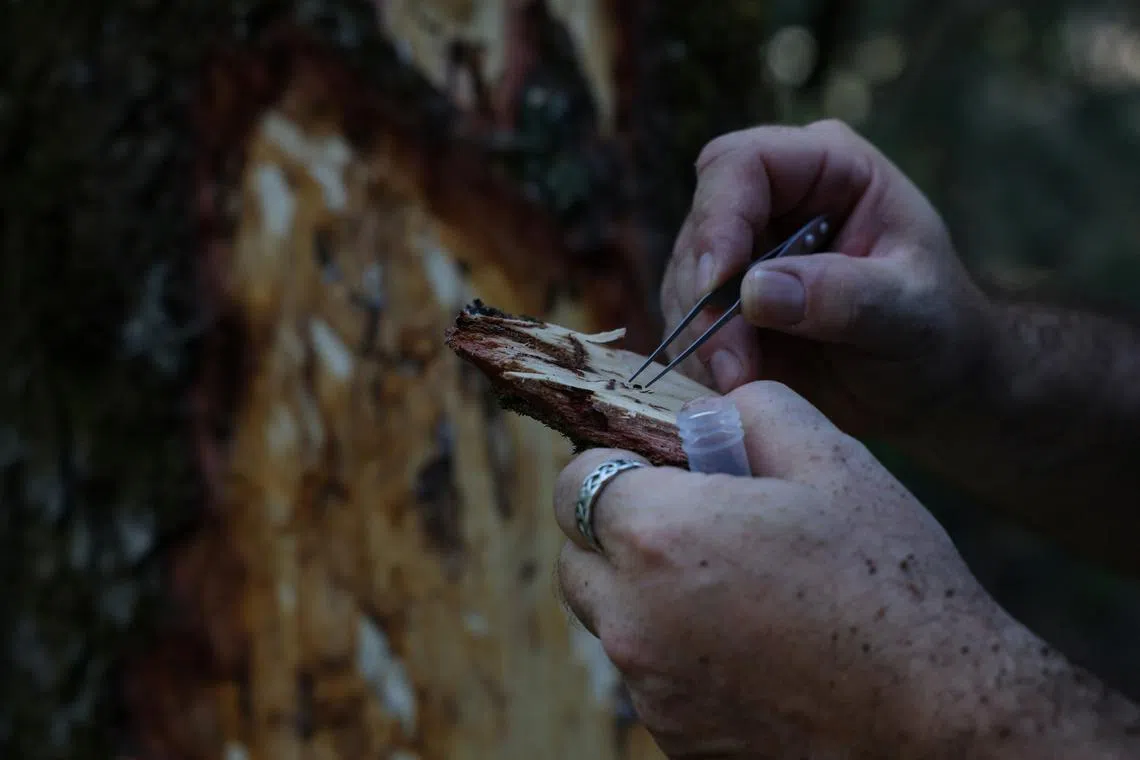Fir forests dying in Greece, as heat peaks and snow cover wanes
Sign up now: Get ST's newsletters delivered to your inbox

Forest entomologist Dimitrios Avtzis (right) talking to Katerina Kolirou, the head of the local forest service near the village of Kalavryta, Greece, on July 9.
PHOTO: REUTERS
Follow topic:
- Drought in Greece, linked to climate change, weakens fir trees, making them vulnerable to destructive wood-boring beetles.
- Rising temperatures have decreased snow cover by 30-40%, reducing vital moisture for fir trees, says Dr Kostas Lagouvardos.
- Authorities plan to remove dead trees, but Dr Lagouvardos notes, "We cannot stop climate change," only mitigate its effects.
AI generated
KALAVRYTA, Greece - On the wooded slopes surrounding the village of Kalavryta in southwestern Greece, hundreds of dying fir trees stand out among the dark green foliage, their brittle, reddish needles a stark reminder of how drought slowly drains the life from nature.
Fir trees are known to need cooler, moist climates. But prolonged droughts in recent years linked to a fast-changing climate in Greece are leaving them exposed to pest infestations, scientists and locals said.
“In the past, we used to see a few dead trees scattered amongst the healthy ones,” said Ms Katerina Kolirou, head of the local forest service in Kalavryta, a village famed for its forests of the Greek fir species Abies cephalonica.
“Now, unfortunately, among the dead ones, we try to spot the few remaining healthy green firs.”
Less water and moisture mean that fir trees become more vulnerable to attacks by pests that bore into their bark to lay eggs and create tunnels, disrupting the trees' ability to transport nutrients between roots and branches and leading to their death.
“These are wood-boring beetles,” said Dr Dimitrios Avtzis, a forest entomologist and research director at the Greek agricultural organisation Demeter, a state research agency, as he cut into the bark of a decaying tree in Kalavryta and found a beetle that he later placed in a vial for examination.
“They don’t form populations as large as bark beetles, but they are just as destructive to the tree.”
Across the globe, 2024 was the warmest year on record, with the average temperature exceeding 1.5 deg C above the pre-industrial era for the first time.

A drone view shows dying fir trees among the healthy ones, near the village of Kalavryta in Greece.
PHOTO: REUTERS
Temperatures in Greece rose by the same amount between 1991-2020, but in some northwestern mountain areas there was a larger 2 deg C increase, said director of research at the National Observatory of Athens, Dr Kostas Lagouvardos, who led a study on rising temperatures and snow cover.
This, in turn, reduced the number of days the soil was covered by snow, another vital source of moisture for fir trees.
He estimated a 30-40 per cent snow-cover decrease over the years.

Dr Dimitrios Avtzis removing a bark beetle from an infested fir tree in Greece.
PHOTO: REUTERS
Fir forest decline, also seen on the Greek mainland and the Ionian Islands, is not unique to Greece. In the province of Huesca in Spain, also in the Mediterranean region, a different species of fir in the Pyrenees mountains, the Abies Alba, has also shown signs of declining in recent years, a development that scientists link to extreme heat.
In Kalavryta, authorities plan to remove dead and infested trees to limit the damage. But this might not be enough to save the forests.
“We cannot stop climate change,” Dr Lagouvardos said.
“What we can try to do is mitigate it, or find solutions. But we cannot create snow.” REUTERS

